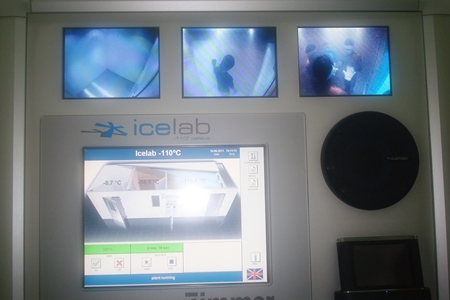Remember R2D2? If you’ve forgotten, remember Luke Skywalker and the Star Wars movies? Of course you do. Now while the robot R2D2 is gathering dust in some Hollywood storage space, another type of robot arrived in Thailand a couple of weeks ago, and it was that which jogged my memory.
This new robot is called RoboDoctor, and is involved in one of the latest types of care delivery, and that is called ‘tele-medicine’. This advance in medicine should not be confused with ‘robotic’ surgery, where the surgeon controls a robotic ‘arm’ which can carry out very fine tasks. Tele-medicine consists of connecting two doctors (in most cases) to be able to discuss with each other the likely diagnosis and subsequent treatment of a patient.

The following true scenario is a wonderful example of tele-medicine at its most basic and this genuinely happened in Australia. A doctor in the outback was called to see a patient with a head injury and it became obvious that there was a bleed inside the skull. If left untreated or unchecked the patient lapses into deeper and deeper unconsciousness and then dies.
The answer to this problem is called ‘trephining’ or making a ‘burr hole.’ By drilling through the skull, the blood can be removed and the pressure is taken off the brain. This procedure dates back to BC times, and museums all over the world have examples of primitive trephines. However, the museum cannot tell us how many were successful procedures! (Operation a success but the patient died!)
There are a couple of spots in the skull where it is safe enough to drill, but exactly where? A GP out in the scrub would hardly know this. And now we come to the drama. The outback doctor had a household electric drill in his home tool kit and rang a specialist in one of the capital cities, who described to him just where to drill – over the phone. He drilled, the blood was released and immediate problem averted. Heroic stuff! And yes, it was successful and both doctor and patient were heroes in my book.
Now back to the RoboDoctor in Thailand, and Pattaya in particular, and further refinement of this tele-medicine concept. Rather than just audio contact between two doctors, there is visual contact as well. What is more, the robot can be moved in any direction and directed wirelessly by the treating doctor at the bedside, but this can also be done by the consultant specialist who may be many kilometers away, using Wi-Fi connectivity. Close up magnification can be done, the visual frames stopped and guidelines drawn on the image on the screen. For the patient, it is almost as if they are having a consultation with (in this case) a specialist neuro-surgeon at the bedside.
This tele-medicine allows ‘remote’ examinations to be done, which could, for example, be a doctor doing a ‘virtual’ ward round in the middle of the night. And although I called it “virtual”, it is actually real-time, just as an examination is real-time.
The robot comes equipped with a powerful lens that sees better than a human eye and the high-tech device can hold a patient’s electronic records and tests such as EKG’s, X-Rays and Echocardiograms, and access them immediately.
One surgeon who is using a RoboDoctor is Ivar Mendez, head of neurosurgery and of the medical facility’s brain repair center in Canada at the Halifax QEII hospital. He said patients quickly become comfortable speaking with the robot and forget it’s a piece of technology examining them.
“I strongly believe this technology is part of the future of medicine. It will bring the expert to the patient anywhere in the country. Robots will not replace physicians,” Mendez said. “Rather, the robots help provide universal health care ensuring that even individuals in remote communities will have access to specialized care.”
That was the Canadian experience, and that is now being replicated here, with the Bangkok Medical Center, Bangkok Hospital Pattaya and Bangkok Hospital Hua Hin all linked up through RoboDoctors. The future is here, now!




